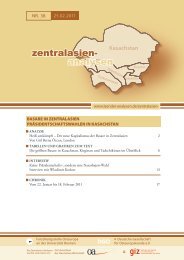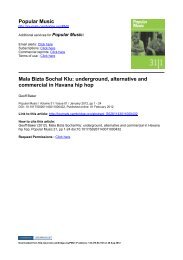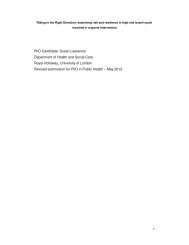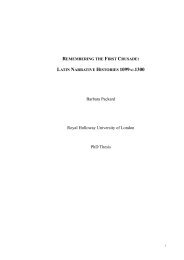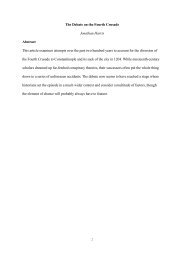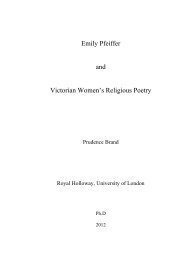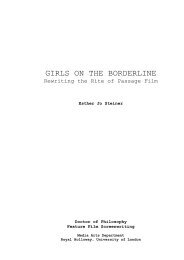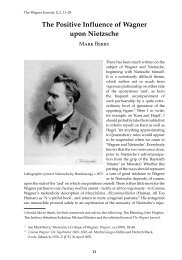Dynamic Capabilities: A Review and Research Agenda
Dynamic Capabilities: A Review and Research Agenda
Dynamic Capabilities: A Review and Research Agenda
Create successful ePaper yourself
Turn your PDF publications into a flip-book with our unique Google optimized e-Paper software.
methods of production, identifying new markets, discovering new sources of supply <strong>and</strong><br />
developing new organisational forms. Miller <strong>and</strong> Friesen (1983) focus on four<br />
dimensions: new product or service innovation, methods of production or rendering of<br />
services, risk taking by key executives <strong>and</strong> seeking unusual <strong>and</strong> novel solutions. Capon<br />
et al. (1992) study three dimensions of organisational innovativeness: market<br />
innovativeness, strategic tendency to pioneer <strong>and</strong> technological sophistication. Recent<br />
studies pertinent to dynamic capabilities have largely focused on new product<br />
development only as an internal enabler for firm change <strong>and</strong> renewal (Dougherty 1992;<br />
Daneels 2002). For example, D’Este (2002) in the study of Spanish domestic<br />
pharmaceutical firms in the period of 1990-1997 identifies that, among manufacturing,<br />
R&D <strong>and</strong> marketing, building new product development capability is particularly<br />
associated with enhanced firm performance. In the study of small metal-working firms<br />
in Northern Italy, Gurisatti et al. (1997) find that success depends on developing new<br />
competences of “a cumulative character” <strong>and</strong> in-house innovative capability. Other<br />
studies (e.g. Tripsas 1997; Petroni 1998; Deeds et al. 1999; Delmas 1999; Lazonick <strong>and</strong><br />
Prencipe 2005) also reveal that in several industries firms’ innovative capability is a<br />
critical factor for firms’ evolution <strong>and</strong> survival in light of external competition <strong>and</strong><br />
change. The more innovative a firm is, the more it possesses dynamic capabilities.<br />
Empirical research on innovation is long st<strong>and</strong>ing. Miller <strong>and</strong> Friesen (1983),<br />
Capon et al. (1992), Avlonitis et al. (1994), Subramanian <strong>and</strong> Nilakanta (1996), Hurley<br />
<strong>and</strong> Hult (1998) <strong>and</strong> Wang <strong>and</strong> Ahmed (2004) have addressed the concern of effectively<br />
measuring organisational innovative capability, <strong>and</strong> multiple indicators have been<br />
developed to measure the dimensions of innovative capability (i.e. strategic innovative<br />
orientation, behavioural, process, product <strong>and</strong> market innovativeness) (Wang <strong>and</strong><br />
17




